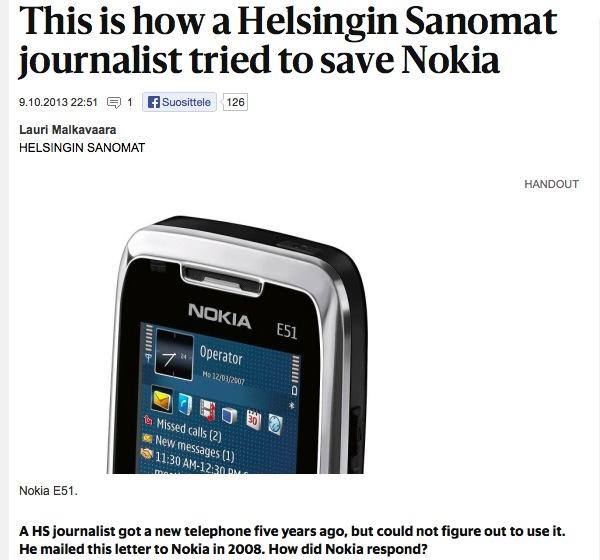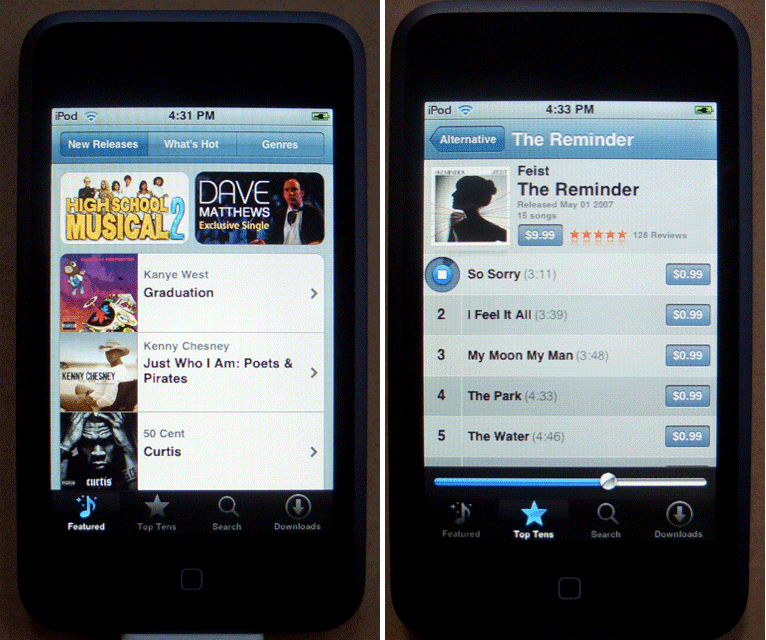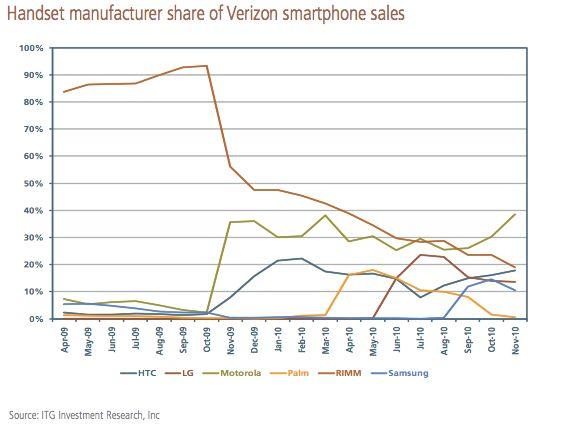How Apple's iPhone rapidly destroyed Nokia's world leading Symbian platform
In 2008, a journalist in Finland wrote a letter to Nokia complaining that its smartphones were difficult to use, prompting a confidential response acknowledging desperate efforts to catch up with Apple's new iPhone. One year later Nokia announced MeeGo, and the following year it made plans to shift to Windows Phone. The company is now being sold off for scrap.
In August 2008, Helsingin Sanomat journalist Lauri Malkavaara wrote the company saying that while Nokia had established itself as a maker of easy to use phones, its latest models were confusing and frustrating.
Malkavaara described the Symbian-based Nokia E51 as being the third cellular phone he had ever owned. But unlike earlier cellphones from Nokia that "were very easy to use" and "no manuals were needed," the latest model lacked either quality.
Apple's iPhone quickly killed Nokia’s Symbian
"I have wondered about it for a week now," Malkavaara wrote of the E51's Symbian interface. "At first I did not even know how to call with it without the manual, and I still do not understand very much of it." He then issued Nokia a grave warning about its ability to compete with Apple's new products.
"The problem is," he stated, "that half a year ago a friend of mine at work showed me a device manufactured by Apple called the iPod Touch. I fell in love instantly. I wanted an iPod, and with that device I could also have convenient access to the internet and much more.
"I ordered my own iPod touch, turned it on, and knew immediately how to use it. I have used the device now on a daily basis for over six months, and I have not even thought about any manuals. The logic of the device opens up right away. It is no wonder that it is a huge success all over the world."
He then described the inscrutable difficulty of navigating menus on Nokia's Symbian phones to try to figure out how to accomplish the most basic of tasks, from setting a ringtone to sending a text message.
Malkavaara concluded, "By putting a telephone like the E51 onto the market, Nokia has squandered its most important legacies: to produce telephones in such a way that they are easy to use. This will cause problems for Nokia."
In response, he stated that Nokia promptly followed up the next day, noting that "Nokia bosses started calling me, wanting to explain Nokia's strategy."
He explained that he wasn't interested in reporting on on Nokia's strategy, but had simply intended the feedback as something for the company to consider internally. One "unyielding" executive, he wrote, pushed to have a conversation about the subject, resulting in plans to meet and discuss the matter.
After growing agitated with the executive's efforts to explain that different people "need different kinds of telephones," Malkavaara replied, “the kind of person who wants to use a bad telephone does not exist."
Nokia knew Symbian was not competitive
In confidence the executive then relented and explained that the company was fully aware of the problem, apologizing that that Nokia had produced a bad telephone experience. He then described a top secret project within Nokia to develop a new operating system intended to support new kinds of phones that would be easy to use.
Nokia had been closely following Apple's 2007 launch of the iPhone, and had expedited "a large number of iPhones to Nokia's head office in Espoo" by courier at its release. The executive described taking one home and presenting it to his four year old daughter, who "learned to use it immediately."
The executive noted he "knew Nokia was in trouble" when the young girl asked him that evening, "can I take that magic telephone and put it under my pillow tonight?"
iPhone destroys BlackBerry, Android can't match value
One month later, in September 2008, Canalys published data showing that Symbian's growth had stalled at the launch of Apple's second generation iPhone 3G, before Android had even shipped on a production phone.
Android wouldn't become popular for another year, during which the parallel collapse of Blackberry at Verizon Wireless at the hands of Apple's iPhone prompted Verizon to abandon the Blackberry and instead back Android as an iPhone alternative through 2010.
By the end of 2010, weak sales of Android had also demonstrated that platform to be incapable of driving iPhone-like demand, prompting Verizon to partner with Apple on the iPad, followed by iPhone 4 early in 2011. Apple’s iPhone rapidly became Verizon’s top seller.
Nokia's Maemo-MeeGo goes nowhere, followed by Windows Phone
Nokia's top secret new OS was Maemo, a Linux project Nokia had previously used in netbook devices and took public as a smartphone platform in August 2009, a year after disclosing the strategy to Malkavaara. Nokia first described Maemo as its new plan for replacing Symbian a year after iPhone 3G had threatened Nokia's growth prospects.
In February 2010, Nokia announced plans to merge Maemo with Intel’s similar Moblin (Mobile Linux) project, resulting in MeeGo. The company subsequently struggled to finish MeeGo by the summer of 2010, when the OS initially shipped on Nokia's N900 netbook. It took more than another full year for Nokia to get MeeGo running on a smartphone, the N9, released in September 2011.
By that time, an increasingly desperate Nokia had partnered with Microsoft, which itself had witnessed the implosion of its own Windows Mobile platform by iPhone. Microsoft was attempting a reboot of its mobile platform under the new brand Windows Phone, but was seeing limited interest in the market.
Just five months after bringing on Stephen Elop as its chief executive in September 2010, the former Microsoft executive announced a new direction for the company based on Microsoft's Windows Phone 7 platform, thanks to billions Microsoft paid Nokia to adopt the struggling platform.
Elop effectively terminated future development of Nokia's own MeeGo project to focus on Windows Phone in an effort to stand out from other vendors' Android offerings.
However, after two and a half years of failing to gain traction with Windows Phone and watching its share of the market plummet from 23 percent to 15 percent, Nokia agreed to be acquired by Microsoft for $7.2 billion.
Seven years earlier at the debut of Apple's iPhone, Nokia's market cap valued the company in excess of $116 billion, roughly equal to Apple itself. In 2000, before smartphones had gained any traction, Nokia had a peak valuation of $222 billion. Today, Apple's market capitalization is nearly $400 billion.
 Daniel Eran Dilger
Daniel Eran Dilger














 Mike Wuerthele
Mike Wuerthele
 Malcolm Owen
Malcolm Owen
 Chip Loder
Chip Loder

 William Gallagher
William Gallagher
 Christine McKee
Christine McKee
 Michael Stroup
Michael Stroup
 William Gallagher and Mike Wuerthele
William Gallagher and Mike Wuerthele






